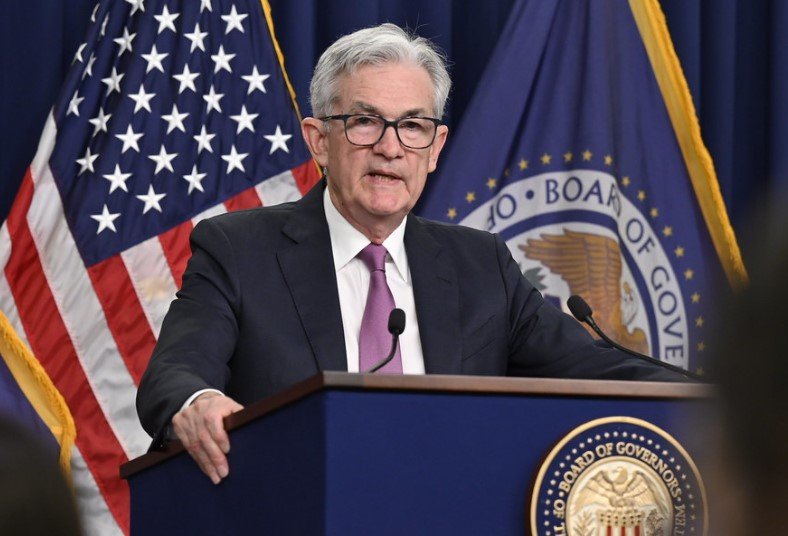Federal Reserve Chair Jerome Powell gave the clearest indication yet that U.S. banks can safely operate in crypto, provided they follow the rulebook. Testifying before Congress on June 24, Powell said the Fed no longer sees “reputational risk” as a barrier—signaling a break from years of gray-zone scrutiny.
The shift isn’t just bureaucratic. It’s a big moment for how Wall Street and Silicon Valley might finally sit at the same table.
Fed Scraps Subjective ‘Reputational Risk’ Clause in Supervision Manual
For years, U.S. banks faced mixed messages from regulators when dealing with crypto firms. The biggest thorn? Something called “reputational risk.” It’s as vague as it sounds.
That term was quietly but officially tossed out of the Fed’s supervision framework on June 23. Powell confirmed it’s gone, done, erased. The Fed instructed examiners to drop the phrase from inspection manuals, pivoting instead to clear-cut financial exposures.
Now, the central bank joins the Federal Deposit Insurance Corporation and Office of the Comptroller of the Currency—two other big dogs that ditched the same language earlier this year.
One sentence captured the moment: “We don’t object to banks engaging with crypto as long as risk controls are solid,” Powell told lawmakers.
That clears the path for clearer audits and far fewer arbitrary denials.

Coinbase Legal Chief Urges Congress to Seal the Deal
Just a day earlier, on Capitol Hill, Ryan VanGrack—Coinbase’s vice president of legal—urged Congress to step in with comprehensive rules. His testimony before the Senate Banking Committee wasn’t just procedural. It came with urgency.
“The promise is at risk due to the absence of a clear, uniform, and simple regulatory framework,” VanGrack said.
He warned that this vacuum lets shady players operate unchecked and pushes legitimate innovation offshore. And banks? They’re left stuck in limbo, unsure how much crypto exposure is too much.
Basically:
-
Crypto firms can’t grow inside the U.S. without predictable oversight.
-
Banks remain hesitant unless there’s cover from regulators.
-
Customers are caught in the middle with limited options.
VanGrack didn’t mince words. He wants Congress to draw the lines fast, or risk missing the crypto train entirely.
Regulators Align, But Market Skepticism Lingers
Though Powell’s remarks are a positive sign, not everyone’s convinced just yet. Analysts say reputational risk may be gone on paper, but examiners need retraining to apply new rules consistently.
A memo from the Fed says staff will now receive updated training and will work with peer agencies to sync their playbooks.
Still, financial firms remember the past. In 2022, when crypto markets imploded, regulators scrambled. Guidance tightened. Banks backed off.
So it’s no surprise that many are still playing wait-and-watch. There’s no rush to dive back into Bitcoin custody or stablecoin payments—at least not until there’s more legal clarity from Congress.
One sentence that stood out? Powell said the Fed “does not intend to interfere with lawful relationships” between banks and crypto companies. It sounds great. But without binding legislation, it’s still just a promise.
Industry Hopes This Is the Turning Point
Inside crypto circles, Powell’s comments felt like a breath of fresh air.
After years of feeling like financial outcasts, companies now see the regulatory tide turning. They’re optimistic—cautiously so.
Banks are already sketching plans to roll out:
-
Custody services for digital assets
-
Blockchain-based payments
-
Trading desks for institutional clients
Meanwhile, stablecoin firms are hoping the Fed pushes lawmakers to craft legislation before the end of the year. Powell’s been vocal about this since April. But so far, Congress is dragging its feet.
Here’s a useful look at which federal regulators have done what:
| Regulator | Action Taken | Date | Effect on Crypto |
|---|---|---|---|
| Federal Reserve | Removed reputational risk | June 2025 | Banks gain clarity |
| FDIC | Similar revision to manuals | March 2025 | Level playing field |
| OCC | Supports crypto custody | January 2025 | Encourages innovation |
They’re finally playing from the same song sheet—at least on paper.
Powell Balances Crypto Signals With Rate Cut Uncertainty
As bullish as Powell sounded on crypto, his testimony wasn’t all sunshine.
He also floated the idea of interest rate cuts later this year, even though inflation isn’t exactly under control. That’s confusing, to say the least.
Markets had expected the Fed to stay put on rates until early 2026. Now, Powell’s mixed signals have traders scrambling to reprice risks.
Some economists say the Fed is trying to be too many things at once—crypto-friendly, inflation-fighting, and recession-preventing. That’s a lot of hats for one central bank.
Still, Powell’s language was deliberate. His nod to “responsible innovation” wasn’t just lip service. It was the clearest sign yet that the U.S. is ready to stop punishing crypto for past mistakes.
Banks Tread Carefully, But Momentum Builds
Most U.S. banks won’t be flipping the switch overnight. There’s just too much legal exposure, especially with ongoing lawsuits against major exchanges like Binance and Ripple still unresolved.
But quietly, behind the scenes, they’re testing the waters.
One senior executive at a major U.S. bank, speaking anonymously, said the institution is “reviewing its internal digital asset policy in light of the Fed’s updated guidance.”
Translation? Things are moving. Slowly. But definitely moving.
So while there’s no stampede into crypto banking, the logjam is starting to crack.








